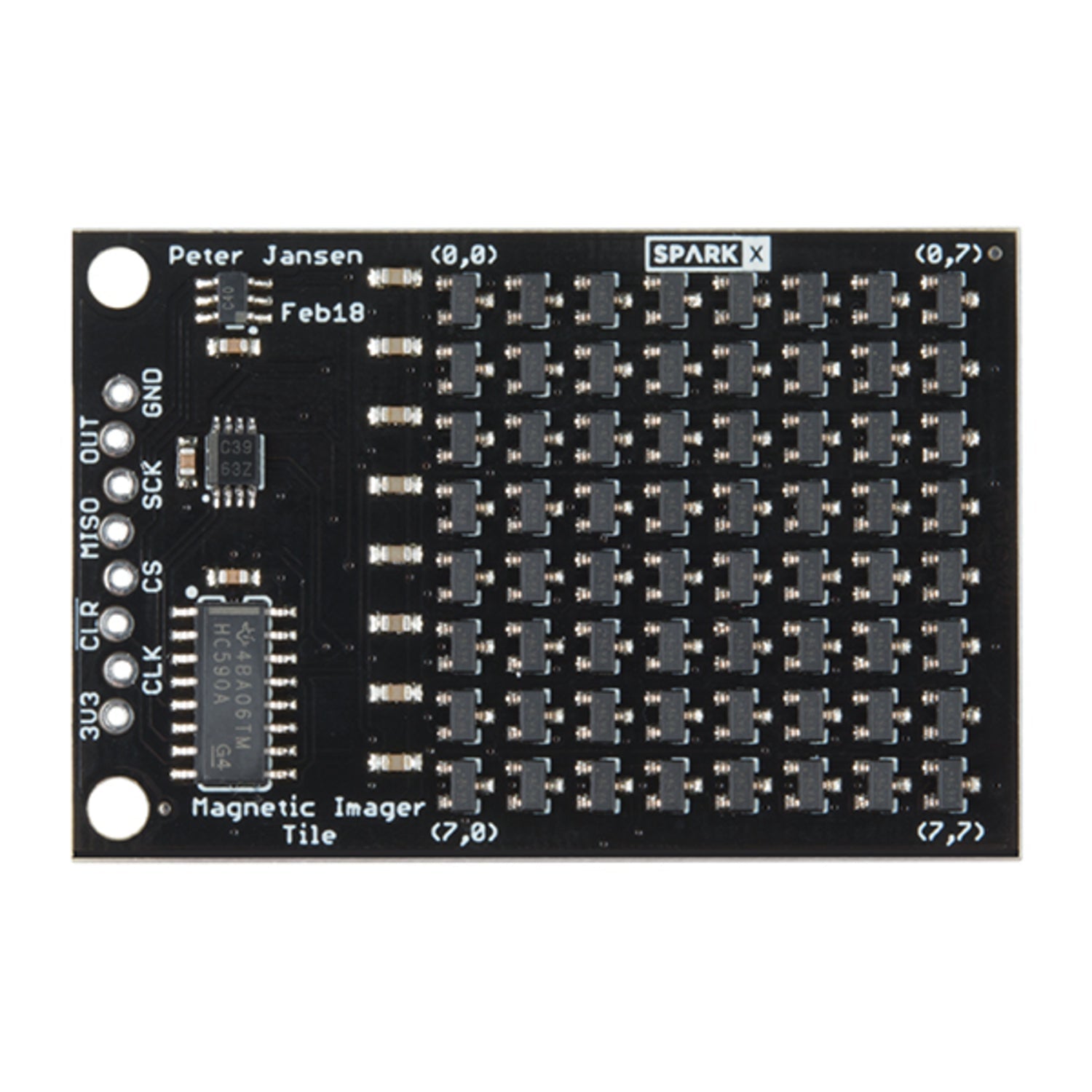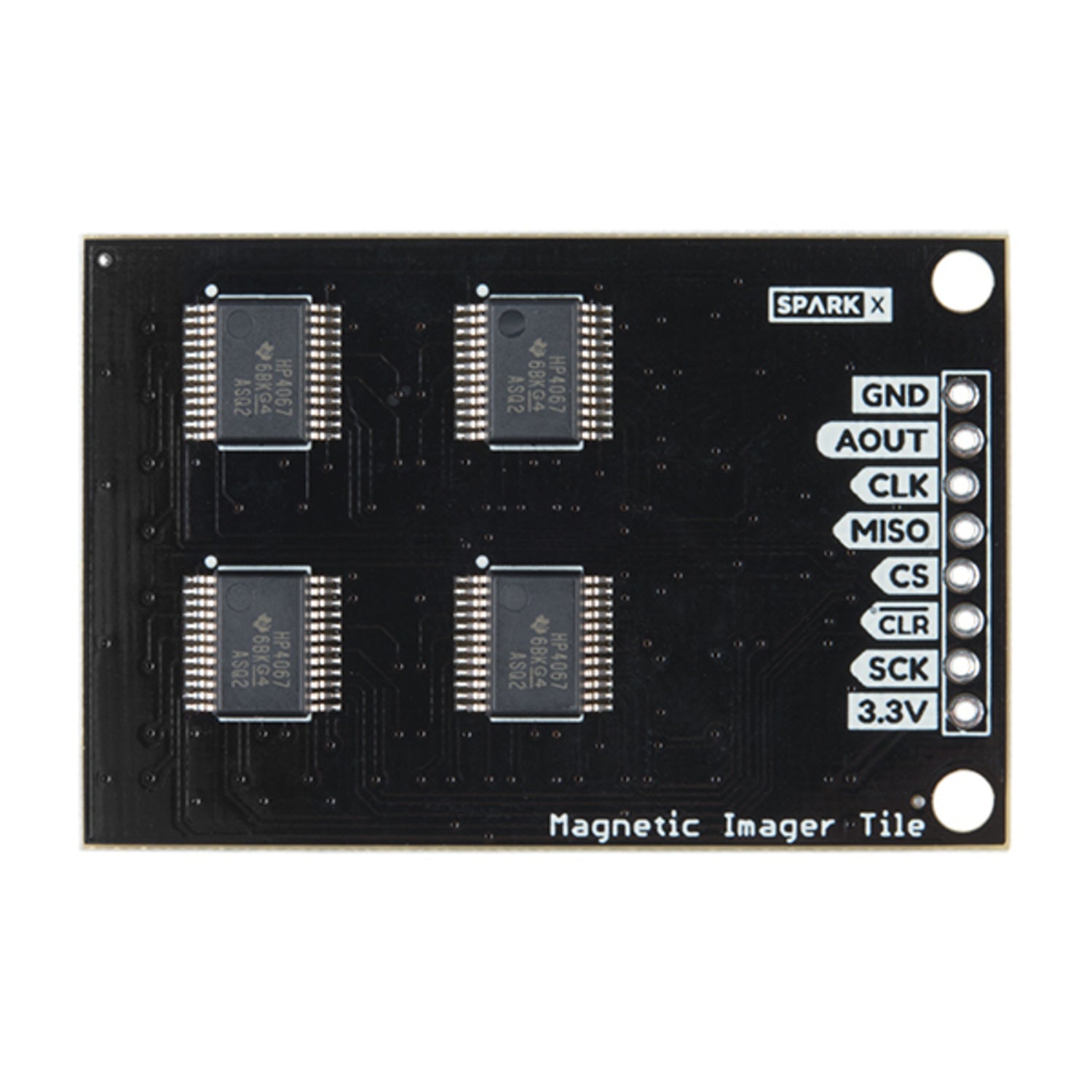The Magnetic Imaging Tile is an amazing device that uses an array of 64 highly - sensitive hall effect sensors to transform magnetic fields into the visual spectrum. You can now witness magnetic fields in real - time! These magnetic sensors on the tile are among the most sensitive on the market. However, to get a clear image, you need to be within 1 to 2 centimeters of the tile. The tile consists of key components like the DRV5053VA magnetic sensors with - 90mV/mT sensitivity and the AD7680 for analog - to - digital conversion, which is a 16 - bit 100kSPS converter. With a 16 - bit ADC and a 3.3V range, it can detect about +/- 0.5mT per bit. The animated gifs don't do justice to this tile as their frame rate is too low. Check out Peter's demo video for stunning visuals. In the gif demo, a SAMD21 Mini was used to transfer ADC data to the serial port at 115200. A Processing sketch then parses the serial data. All the software is open - source and available in the repo. This setup can reach over 76 frames per second and up to 200 fps with buffering. The ChipKit MAX32 is also supported and can achieve around 2,000fps. A faster processor could reach 1500fps, limited by the 100kSPS of the ADC. The raw analog signal is accessible, allowing processors with built - in faster ADCs to convert the signal directly. The theoretical limit of the DRV5053 is around 20,000 fps, but it would need a very fast ADC. This is a joint effort with Peter Jansen of the “Open Source Science Tricorder Project”. You can read about his work on Hack A Day. Note: The board label for 3V3 is correct, but you can safely power the board with 5V, which will enhance the ADC's overall resolution and improve performance.



Using the Magnetic Imaging Tile is easy. First, get your magnetic object close to the tile, within 1 to 2 centimeters, so you can see the magnetic field clearly. You can use the provided software (which is open - source and available in the repo) to view the visual representation of the magnetic field. If you want to connect it to a device, use a SAMD21 Mini like in the demo to transfer the ADC data to the serial port at 115200, and then a Processing sketch will help you make sense of the data. You can also use the ChipKit MAX32 for faster frame rates. When it comes to power, you can use either 3V3 as labeled on the board or 5V for better performance. Just make sure the power source is stable. As for maintenance, keep the tile clean and avoid exposing it to extreme temperatures or physical damage. If you have a processor with a built - in faster ADC, you can take advantage of the exposed raw analog signal for direct conversion.